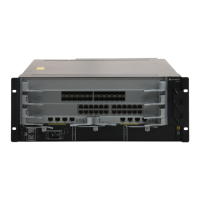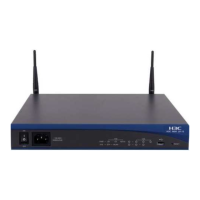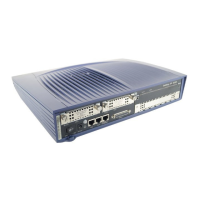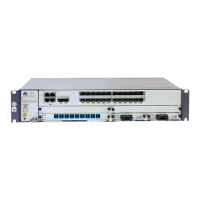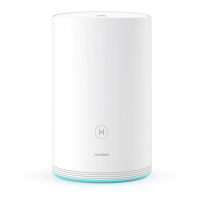Command Manual - System Management
Quidway S6500 Series Ethernet Switches Chapter 5 SNMP Configuration Commands
Huawei Technologies Proprietary
5-16
Example
# Enable sending Trap message to myhost.hello.com with community name hello.
[Quidway] snmp-agent trap enable
[Quidway] snmp-agent target-host trap address udp-domain 2.2.2.2 params
securityname hello
# Enable sending Trap packets to 2.2.2.2 with the community name public
[Quidway] snmp-agent trap enable
[Quidway] snmp-agent target-host trap address udp-domain 2.2.2.2 params
securityname public
5.1.18 snmp-agent trap enable
Syntax
snmp-agent trap enable [ standard [ authentication ] [ coldstart ] [ linkdown ]
[ linkup ] | bgp [ backwardtransition ] [ established ] | vrrp [ authfailure |
newmaster ] ]
undo snmp-agent trap enable [ standard [ authentication ] [ coldstart ] [ linkdown ]
[ linkup ] | bgp [ backwardtransition ] [ established ] | vrrp [ authfailure |
newmaster ] ]
View
System view
Parameter
standard [ authentication ] [ coldstart ] [ linkdown ] [ linkup ]: Configure to send
standard Trap messages. authentication: Configure to send SNMP authentication
Trap messages. coldstart: Configure to send SNMP cold start Trap messages.
linkdown: Configure to send SNMP link down Trap messages. linkup: Configure to
send SNMP link up Trap messages.
bgp [ backwardtransition ] [ established ] : Configure to send BGP Trap messages.
vrrp [ authfailure | newmaster ] : Configure to send VRRP Trap messages.
Description
Using snmp-agent trap enable command, you can enable the device to send Trap
message. Using undo snmp-agent trap enable command, you can disable Trap
message sending.
By default, Trap message sending is disabled.
snmp-agent trap enable command and snmp-agent target-host command should
be used at the same time. snmp-agent target-host command specifies which hosts
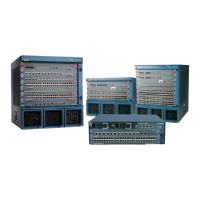
